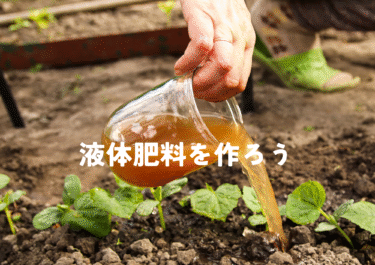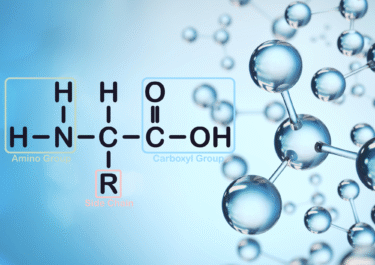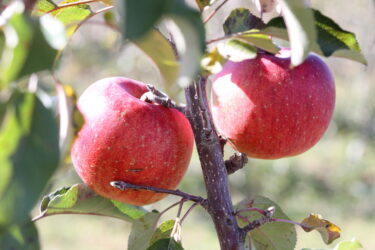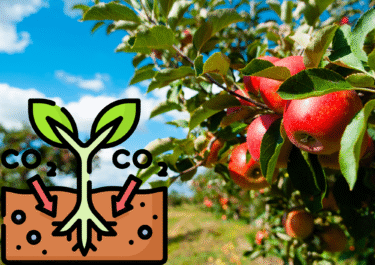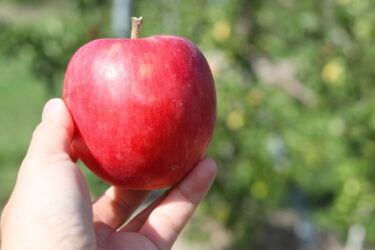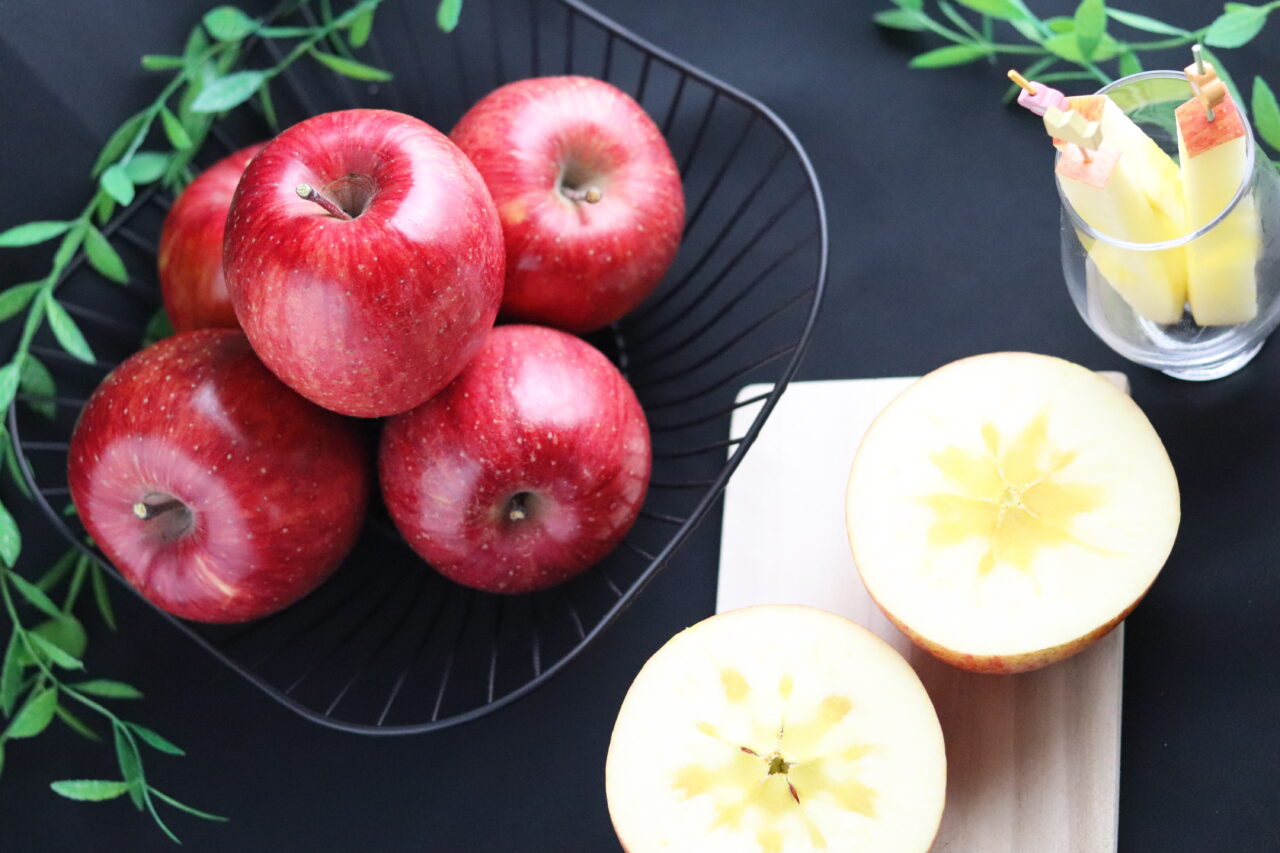研究の背景と目的
農作物の収量減少につながる土壌病害は、主にカビなどの微生物(例:ピシウム属)によって引き起こされ、全体の約6割を占めています。
これらの病害を防除するには通常、土壌消毒用の化学農薬が使われますが、連用による環境負荷や耐性菌の出現が懸念されています。
一方、自然界に存在する有用な微生物(植物保護細菌)を活用した微生物資材は、環境に優しいものの、効果が不安定で化学農薬と比べてコストが高いなどの課題がありました。
そこで農研機構の研究チームは、病害防除機能を持つPseudomonas protegens(非病原性シュードモナス属細菌)を使い、その防除効果の「安定化」と「増強」を目指して、天然成分やアミノ酸の添加による機能向上技術を検討しました。
その結果、特にグルタミン酸を加えることで著しい相乗効果が得られることに着目し、今回の研究に至りました。
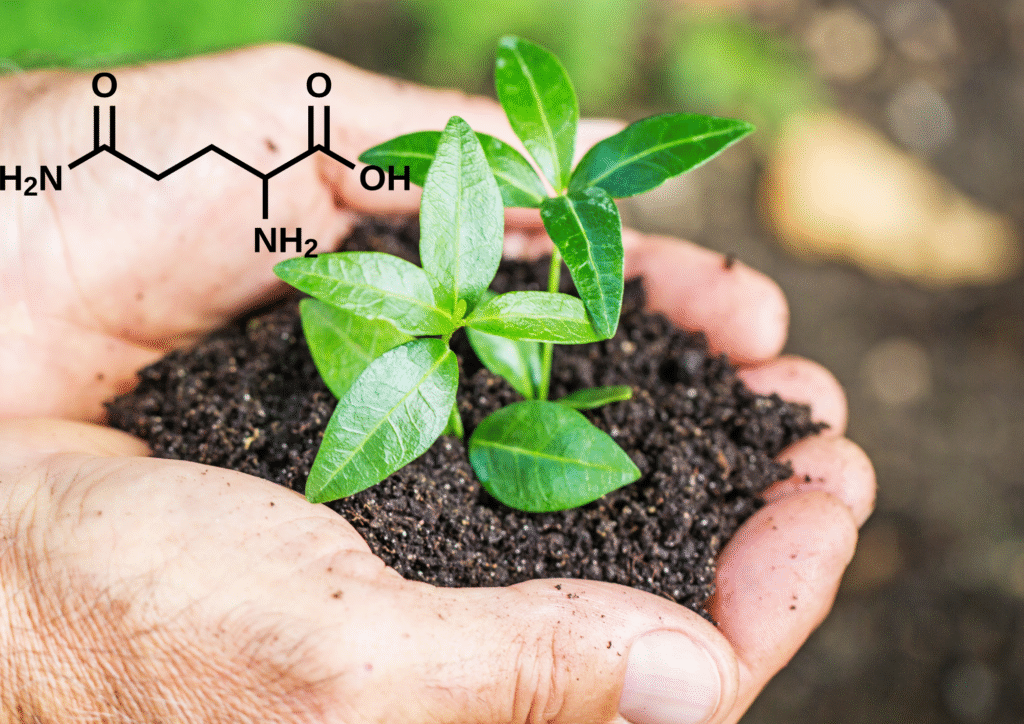
実験の内容と主な成果
実験モデルと条件
対象植物:キュウリの幼苗(本葉が出始める2週間までを主に評価)
病原菌:ピシウム病菌(Pythium ultimum)を繁殖させた病原性土壌
微生物資材:Pseudomonas protegens 懸濁液
処理区分
無添加(病害のみ)
植物保護細菌のみ添加
植物保護細菌+各種アミノ酸(グルタミン酸、他数種類)
アミノ酸のみ(化学的制御検証)
成果の要点
治療効果の向上:植物保護細菌単独でも一定の病害抑制効果が認められましたが、グルタミン酸を併用するとその防除効果が大幅に増強。
具体的には、キュウリ幼苗の植物重量が細菌単独に比べて約2倍にアップ。
生存率は細菌のみで約15%だったものが、細菌+グルタミン酸処理では約60%に改善。
持続効果の確認:実験用土壌で育苗ー温室環境を通じて1ヶ月間継続栽培しても、グルタミン酸添加の効果が消えず、本葉期以降にも有効。幼苗期での防除介入として優れるメカニズムであると結論づけられました。
選択性の高さ:試験した他のアミノ酸ではこれほどの効果は得られず、グルタミン酸固有の働きがあることが示唆されました。
なお、グルタミン酸単独では防除効果はないという制御実験で確認済みです。
メカニズムと科学的意義
研究の一環として、グルタミン酸が植物保護細菌にどのように作用して防除性を高めるのかについても検討されており、以下の知見が得られています
グルタミン酸が細菌のキチナーゼ活性(菌体外酵素)の発現を促進し、これが病原菌の細胞壁を分解することで、相乗的な病害抑制につながることが示唆されます。
その成果は、科学雑誌『Molecular Plant‑Microbe Interactions』にて、2023年7月28日に論文として発表されました。
題は「Glutamate positively regulates chitinase activity and the biocontrol efficacy of Pseudomonas protegens」です。

社会的意義と将来展望
この技術には以下のような意義と潜在的展開があります。
🌱 環境負荷の低減
土壌消毒用の化学農薬使用量を削減でき、環境汚染や耐性菌問題にも対応可能。
🧪 微生物資材の実用化促進
効果の安定化が図られ、一貫性の高い防除策としてコスト改善も見込まれます。
📈 応用可能性の拡大
グルタミン酸と植物保護細菌の組み合わせは、キュウリ以外の野菜や他の土壌病害(例:ファイトフトラ類、フウサ類)にも応用可能。
最適な添加時期と量を検討し、規模拡大試験や実用化に向けた実証試験が進められています。
知財および研究支援体制
特許:本技術に関して「特許第7078982号」を出願済。
研究資金:文部科学省科学研究費補助金「18H02209」「21H02200」による支援を受けています。
研究体制:農研機構 生物機能利用研究部門が所管し、責任者および研究担当者(中島信彦、竹内香純、瀬尾茂美ら)が研究を推進。
課題と今後の研究の方向
他作物・他病害への展開
多様な農作物に対する防除性能をアミノ酸併用で強化できるかを検証。
運用者視点での検討
土壌環境・微生物相への影響、農家における現場での再現性、導入コストの最適化が必要。
スケール試験による信頼性評価
農場サイズや露地栽培でのフィールド試験を行い、実用性データを積み上げる。
今回の研究により、グルタミン酸の土壌添加が植物保護細菌の防除効果を大幅に増強し、キュウリ幼苗において病原菌抵抗性と生存率を劇的に向上させることが確認されました。
これは、化学農薬依存から脱却する環境に優しい農業技術として大きな進歩を意味します。
今後は他作物や他病害分野にも応用できる可能性があり、持続可能な農業の未来を切り拓く有望な一歩となるでしょう。
ここで、グルタミン酸とは?
🍜 グルタミン酸とは?
✅ 一言でいうと…
グルタミン酸は「うま味」の成分であり、体や植物の栄養にもなるアミノ酸の一つです。
🧪 どんな物質?
アミノ酸の一種
タンパク質をつくる基本単位のアミノ酸のうちの一つ。体の中にも自然に存在しています。
化学式:C₅H₉NO₄
味:とても特徴的な「うま味」を持ち、昆布だしや味の素などの「旨味成分」としても有名です。
🍙 食べ物との関係
昆布、トマト、チーズ、醤油、味噌などに多く含まれます。
グルタミン酸を主成分とする「うま味調味料(例:味の素)」は、料理の味を引き立てます。
🧍♂️ 人の体ではどう使われる?
神経伝達物質(脳の「情報のやり取り」)として重要。
筋肉のエネルギー源にもなる。
腸の健康維持や免疫力にも関与。
🌱 農業での利用価値は?
ここが今回の研究に関わる重要ポイントです。
✅ 土壌に加えるとどうなる?
グルタミン酸は土壌中の微生物にとって「エサ」になる。
特に、植物を守る有用菌(例:Pseudomonas protegens)はグルタミン酸を利用して活性化し、
病原菌を攻撃する酵素(キチナーゼなど)を多く作るようになる。
結果として植物の病気を防ぐ力が強くなる!
🌏 グルタミン酸の良いところ(農業編)
特徴 内容
✅ 環境に優しい 化学農薬ではないため、残留性や環境汚染の心配が少ない
✅ 自然由来 多くの食品や生物に含まれる、天然のアミノ酸
✅ 微生物との相性◎ 植物を守る細菌にとっての栄養になり、働きを強めてくれる
💬 たとえ話でイメージすると…
グルタミン酸=スポーツドリンク
→ 植物を守る「微生物」が、力を出すために必要な「エネルギードリンク」のようなもの!
グルタミン酸を与えることで、微生物が元気になって病気から植物を守ってくれるのです。
🧭 まとめ
ポイント 内容
正体 アミノ酸の一種。うま味成分としても有名。
食品との関係 昆布・味噌・トマトなどに豊富。
農業での働き 有用菌の力を引き出して、植物を病気から守るサポートをする。
メリット 安全・環境負荷が少ない・効果的な病害抑制が可能。
● 農研機構「グルタミン酸は植物保護細菌の機能を高める」(2024年)
https://www.naro.go.jp/publicity_report/press/laboratory/nias/161836.html
Background and Objectives of the Study
Soilborne diseases, which significantly reduce crop yields, are primarily caused by microorganisms such as fungi (e.g., Pythium species) and account for approximately 60% of such issues. These diseases are typically controlled using chemical fumigants, but their repeated use has raised concerns about environmental pollution and the emergence of resistant pathogens.
As an environmentally friendly alternative, microbial agents based on naturally occurring beneficial microorganisms (plant-protective bacteria) have been explored. However, these agents have faced challenges such as inconsistent efficacy and higher costs compared to chemical pesticides.
To address these issues, a research team at NARO (National Agriculture and Food Research Organization) focused on the biocontrol bacterium Pseudomonas protegens (a non-pathogenic pseudomonad), aiming to “stabilize” and “enhance” its disease suppression effect. They investigated the potential of natural compounds and amino acids to improve its biocontrol function. Their attention was drawn to glutamic acid, which demonstrated a remarkable synergistic effect, leading to the current study.
Experimental Design and Key Findings
Experimental Model and Conditions
- Target Plant: Cucumber seedlings (evaluated up to ~2 weeks after the emergence of true leaves)
- Pathogen: Pythium ultimum, a causative agent of damping-off disease, introduced into pathogenic soil
- Microbial Agent: Suspension of Pseudomonas protegens
Treatment Groups:
- Control (pathogen only, no additives)
- Plant-protective bacteria only
- Plant-protective bacteria + various amino acids (including glutamic acid)
- Amino acids only (to assess chemical control effects)
Key Results
- Enhanced Biocontrol Effect:
While the bacteria alone showed some suppression of disease, combining them with glutamic acid significantly improved the protective effect.- The plant biomass of cucumber seedlings nearly doubled compared to bacterial treatment alone.
- Survival rate increased from ~15% with bacteria alone to ~60% with the bacteria + glutamic acid treatment.
- Sustained Efficacy:
Even after one month of continuous cultivation in greenhouse conditions using experimental soil, the effect of glutamic acid persisted and remained effective beyond the seedling stage. This suggests a promising early-intervention strategy against soilborne pathogens. - High Specificity:
Other tested amino acids did not exhibit the same level of enhancement, indicating a unique function of glutamic acid. A control test also confirmed that glutamic acid alone does not provide disease control.
Mechanism and Scientific Significance
The study also explored how glutamic acid interacts with the plant-protective bacteria to enhance disease control, and found the following:
Glutamic acid stimulates the expression of chitinase activity (an extracellular enzyme) in Pseudomonas protegens, which contributes to breaking down the cell walls of pathogenic fungi, thereby exerting a synergistic biocontrol effect.
This finding was published as a peer-reviewed paper on July 28, 2023, in the journal Molecular Plant‑Microbe Interactions, titled:
“Glutamate positively regulates chitinase activity and the biocontrol efficacy of Pseudomonas protegens.”
Societal Significance and Future Outlook
This technology offers the following significance and potential applications:
🌱 Reducing Environmental Impact
It helps reduce the use of chemical soil fumigants, addressing both environmental pollution and resistance development.
🧪 Promoting Practical Use of Microbial Agents
By stabilizing efficacy, this approach may lower costs and enable more consistent use of microbial biocontrol in the field.
📈 Broader Applicability
The synergistic effect of glutamic acid and plant-protective bacteria may extend to other crops and soilborne pathogens, such as Phytophthora and Fusarium species.
Ongoing studies are optimizing dosage and application timing, and scaling up to field trials for practical implementation.
Intellectual Property and Research Support
- Patent: Japanese Patent No. 7078982 has been filed for this technology.
- Funding: Supported by JSPS KAKENHI (Grant Numbers 18H02209 and 21H02200).
- Research Structure: Led by the Division of Biological Functions Utilization at NARO, with researchers including Nobuhiko Nakajima, Kasumi Takeuchi, and Shigemi Seo.
Challenges and Future Research Directions
- Expansion to Other Crops and Pathogens:
Further validation is needed to confirm whether this amino acid-based enhancement is effective in other agricultural settings. - Operational Considerations:
Studies are ongoing to evaluate the impact on soil microbiota, reproducibility in actual farming conditions, and cost-effectiveness for farmers. - Reliability Through Large-Scale Testing:
Field trials on larger farm plots and open-air cultivation systems are underway to build practical data and validate scalability.
Conclusion
This study has demonstrated that adding glutamic acid to soil significantly enhances the biocontrol efficacy of plant-protective bacteria, dramatically improving both resistance to pathogens and survival rates in cucumber seedlings. This represents a major step toward sustainable, environmentally friendly agricultural practices by reducing reliance on chemical pesticides.
With further development, this approach could be extended to other crops and diseases, marking a promising advance toward a more sustainable future in agriculture.
What is Glutamic Acid?
🍜 In Simple Terms:
Glutamic acid is an amino acid known as a key component of “umami” flavor, and also plays an important nutritional role in both animals and plants.
🧪 Scientific Description:
- A naturally occurring amino acid, one of the building blocks of proteins.
- Chemical formula: C₅H₉NO₄
- Known for its rich umami flavor, found in foods like kelp broth and MSG (monosodium glutamate).
🍙 Found in Foods Like:
Kombu (kelp), tomatoes, cheese, soy sauce, and miso.
Commercial flavor enhancers such as MSG are primarily made from glutamic acid.
🧍♂️ Role in the Human Body:
- Functions as a neurotransmitter, facilitating communication in the brain.
- Serves as an energy source for muscles.
- Helps maintain gut health and supports the immune system.
🌱 Relevance to Agriculture:
✅ When Added to Soil:
Glutamic acid serves as a “food source” for soil microbes.
Specifically, beneficial bacteria like Pseudomonas protegens use it to boost their activity and increase production of pathogen-fighting enzymes like chitinase.
As a result, plants gain stronger disease resistance!
🌏 Benefits of Glutamic Acid in Agriculture:
| Feature | Description |
|---|---|
| ✅ Environmentally Friendly | Not a chemical pesticide—poses little risk of residue or environmental pollution |
| ✅ Naturally Derived | A natural amino acid found in many foods and living organisms |
| ✅ Microbe-Friendly | Enhances the function of beneficial bacteria in the soil |
💬 Analogy:
Think of glutamic acid as a sports drink.
It energizes the “microbial athletes” (beneficial bacteria) to help them protect plants more effectively.
🧭 Summary Table
| Point | Description |
|---|---|
| Identity | A naturally occurring amino acid and umami component |
| Relationship to Food | Abundant in kombu, miso, tomatoes, etc. |
| Role in Agriculture | Boosts beneficial microbes to enhance plant disease resistance |
| Benefits | Safe, eco-friendly, and enables effective disease control |



